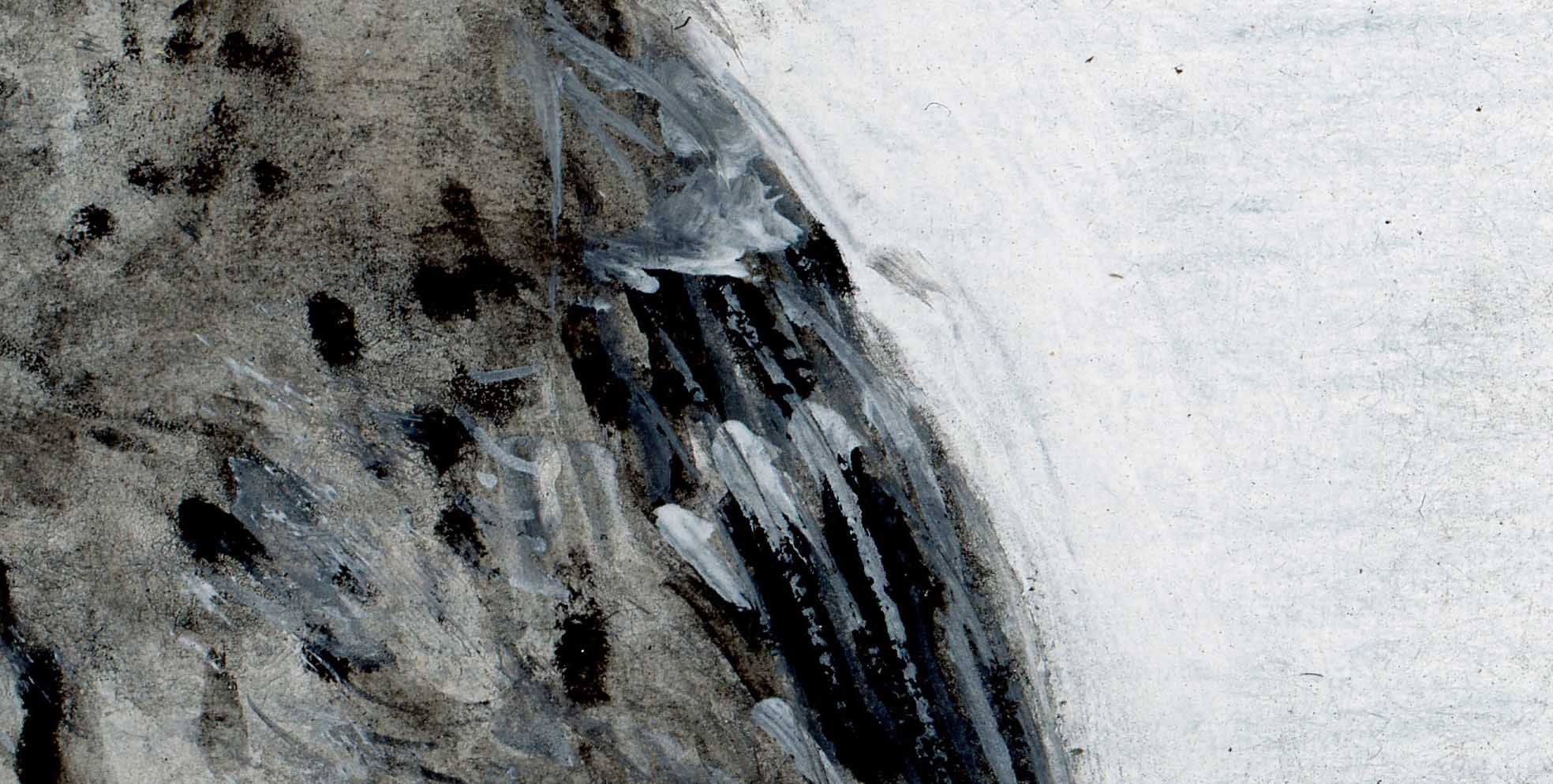Lincoln Sparrow Junk Mail Painting
Lincoln Sparrow (Melospiza lincolnii) 84%
junkmail, gesso, ink, charcoal on cardboard
Floated mount on wood support.
2022
9 7/8 X 8 3/4″
See the other works in the Junk Mail Migration Painting Series
Purchase the original Lincoln Sparrow Painting
Explore all available paintings, prints, and stationary in the Junk Mail Migration Painting Series
Lincoln Sparrow (Melospiza lincolnii) 84% — Eye and beak detail of painting
What is the % in the title? The percentage in the title is the breeding data reported by the Boreal Songbird Initiative project. In this instance, 84% of Lincoln Sparrows breed in the Boreal Forest Ring.
Lincoln Sparrow (Melospiza lincolnii) 84% is part of a larger ongoing series about backyard ecologies called Junk Mail Migration. These works examine the direct impact of junk mail production on the immediate environment – our backyards.
Many of our favorite songbirds breed, live, and migrate to/from the Boreal Forest, only passing through Iowa seasonally. When their breeding habitat is destroyed, the population dwindles and the chance of viewing the likes of a Yellow-bellied Flycatcher in our backyard diminishes.
For this portion of the project, birds were selected that migrate through Iowa seasonally, are not year round residence of Iowa, and have over 70% of their breeding ground in the North American boreal forest ring.
All are represented in life size scale, drawn with graphite, charcoal, gesso, and ink on junk mail laminated to recycled cardboard and supported with reclaimed or sustainably forested wood.
-
Dinsmore, James J. Iowa Birds. Iowa State Press, 1984.
Boreal Songbird Initiative. “Bird Conservation,” February 26, 2014. http://www.borealbirds.org.
Laura Spess Jackson, Carol A Thompson, and James J Dinsmore. The Iowa Breeding Bird Atlas. University of Iowa Press, 1996.
Sullivan, B.L., C.L. Wood, M.J. Iliff, R.E. Bonney, D. Fink, and S. Kelling. 2009. eBird: a citizen-based bird observation network in the biological sciences. Biological Conservation 142: 2282-2292.
Terres, John K. The Audubon Society Encyclopedia of North American Birds. Wings, 1991.
Kent, Thomas Hugh. Birds in Iowa. T.H. Kent T.H. Kent, 1996.
-
A few things I’ve found helpful as a very beginning birder is to try and remember:
Size (bigger or larger than a bird you do know like a cardinal, sparrow or red-tail hawk)
Bill shape
Markings around the eye
Crest or other distinguishing features like it has a purple breast.
Tail shape
Cornell is a proponent of citizen science, so they offer many course.
While names are not important for enjoyment of birding, there is a certain thill in putting a name to a bird. For me, naming helps to solidify the memory and experience of seeing and hearing it. Of course photographing, drawing, and painting help too.



